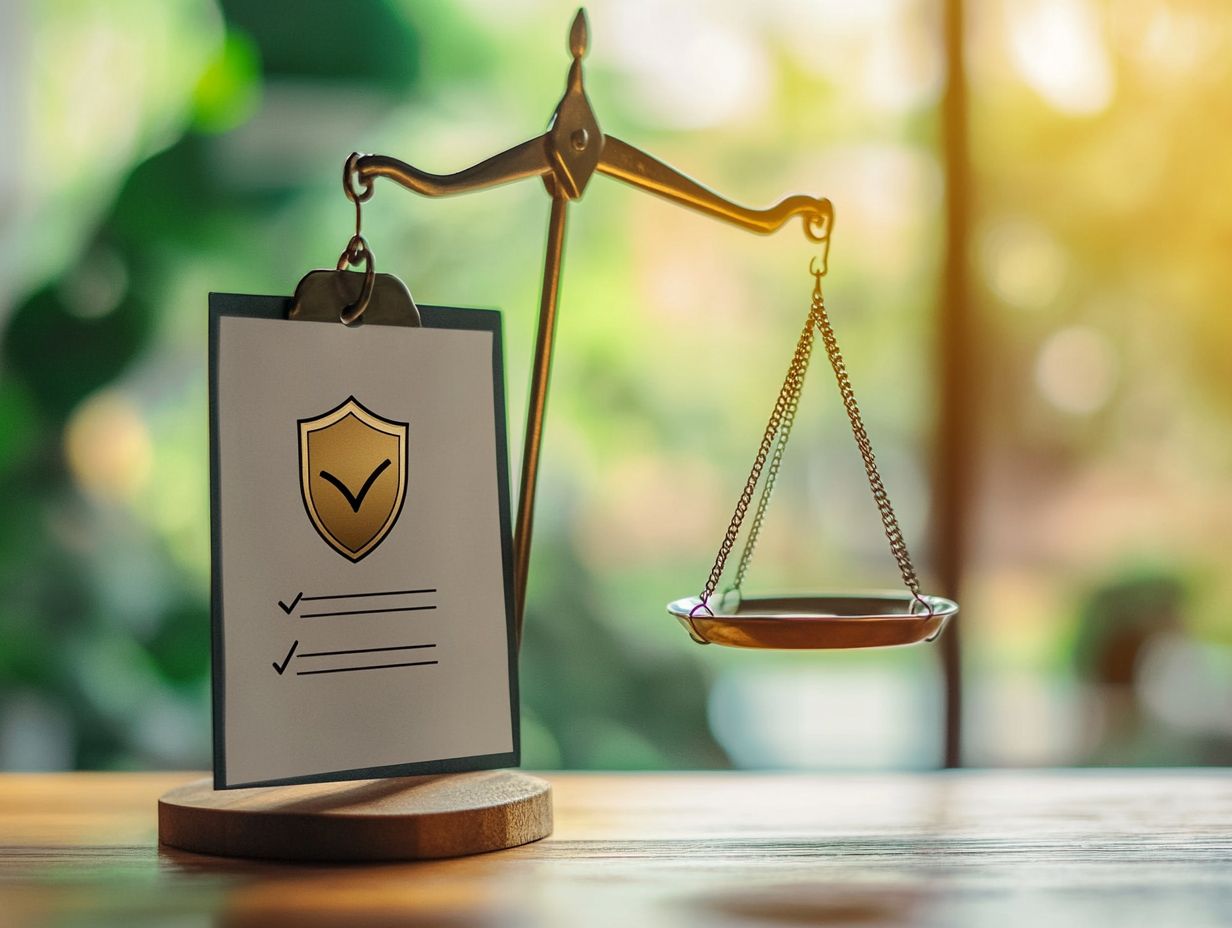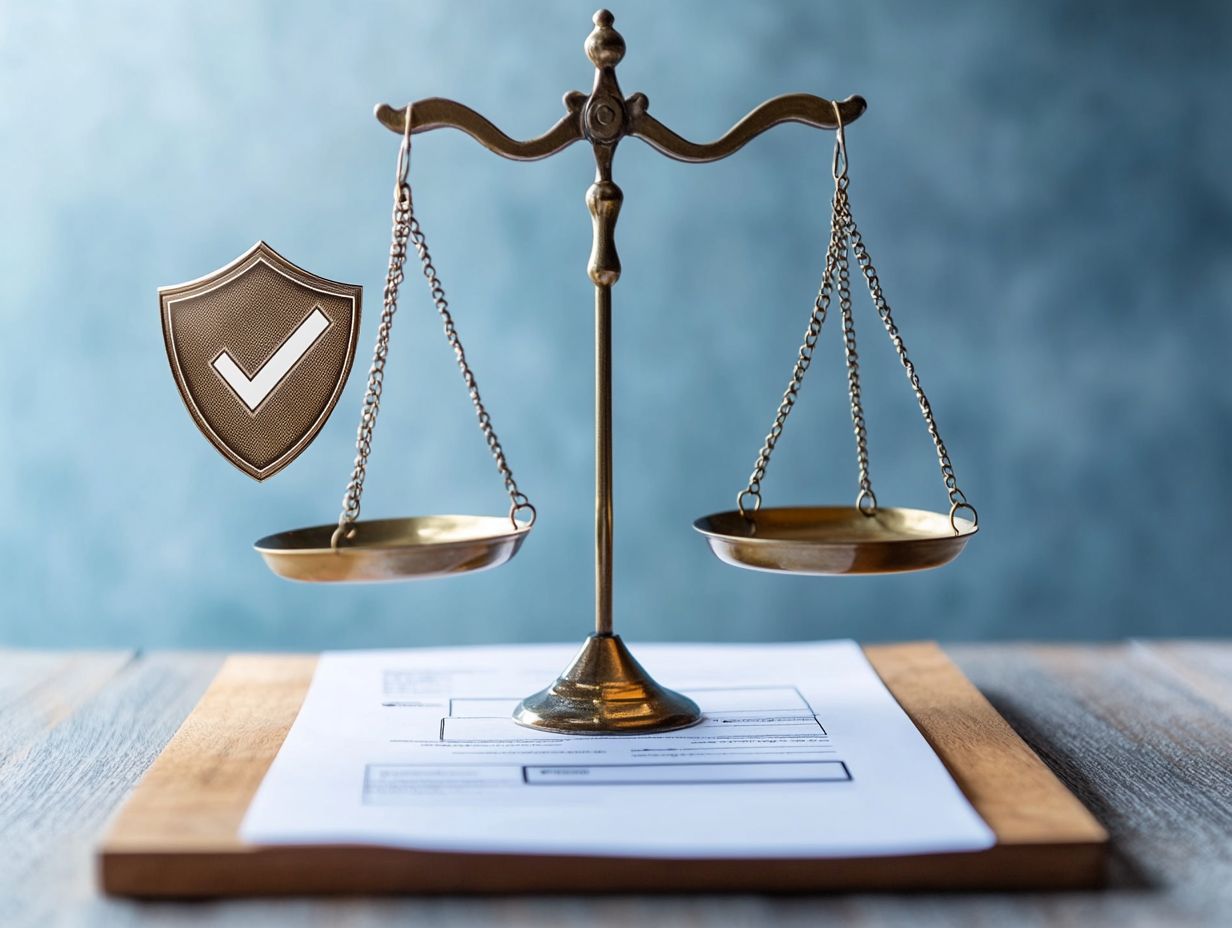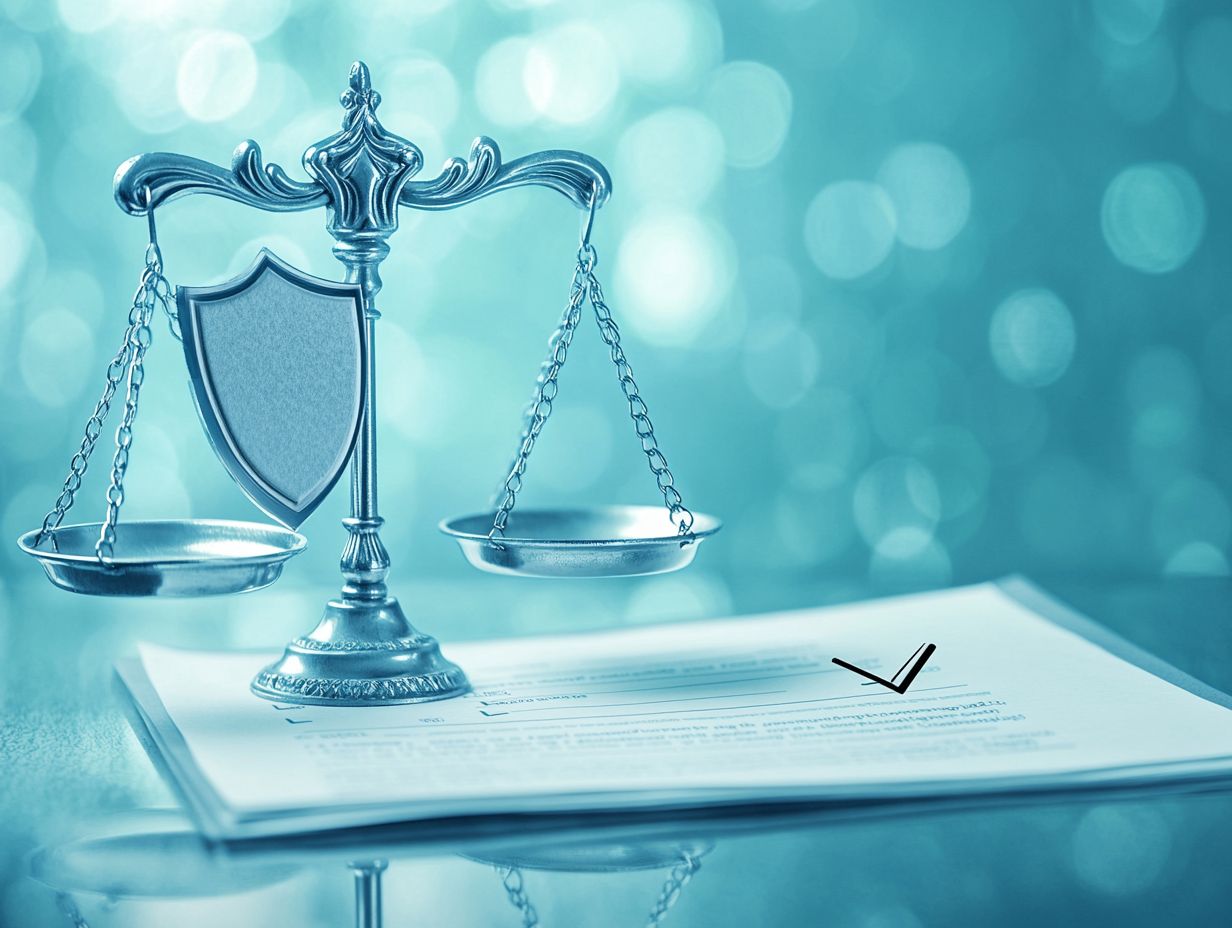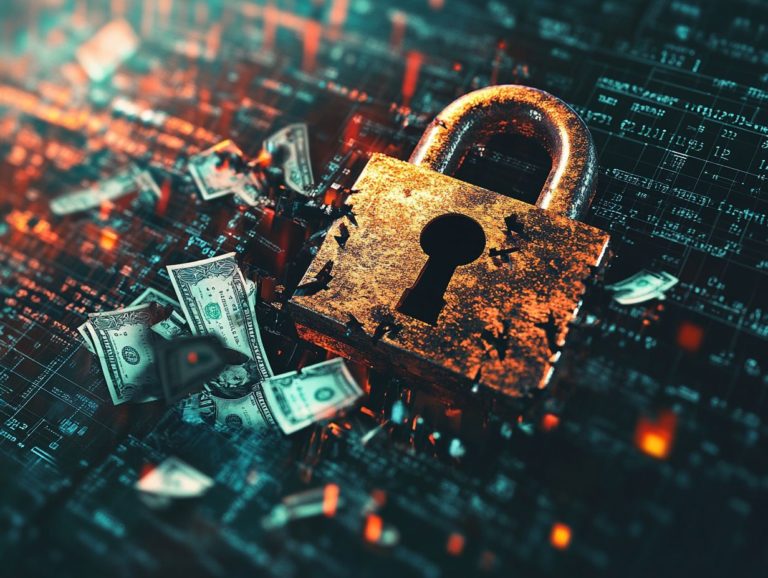balanced approach to compliance and security
In today s ever-evolving digital landscape, the balance between compliance and security has become more crucial than ever. Navigate a complex web of regulations while diligently safeguarding sensitive data from potential breaches.
This article explores the relationship between compliance measures and security protocols, shedding light on key standards and strategies. By leveraging technology, you can create a balanced approach that ensures compliance and security.
Armed with best practices and effective tools, you have the power to enhance your organization s resilience against evolving threats.
Contents
- Key Takeaways:
- The Importance of Compliance and Security
- Compliance Measures for Security
- Security Measures for Compliance
- The Role of Technology in Achieving a Balanced Approach
- Best Practices for Maintaining a Balanced Approach
- Frequently Asked Questions
- What is a balanced approach to compliance and security?
- Why is a balanced approach necessary for compliance and security?
- How can a balanced approach be achieved?
- What are the benefits of a balanced approach to compliance and security?
- What are some common challenges in implementing a balanced approach?
- How can organizations ensure ongoing compliance and security with a balanced approach?
Key Takeaways:

The Importance of Compliance and Security
Compliance and security are crucial for your success. You are navigating an ever-evolving threat environment rife with cyber attacks aimed at sensitive data and operational integrity.
You must adopt strong compliance measures and security protocols. By adhering to industry standards, you shield your organization from the risks of data breaches and financial repercussions while cultivating trust with clients and regulatory bodies.
This commitment supports your business goals and sustainability efforts.
Understanding the Relationship
Understanding the relationship between compliance and security is vital for your organization to achieve regulatory compliance while effectively safeguarding your data against cyber threats. This intersection requires a comprehensive approach where compliance measures, such as audits, play a critical role in evaluating the effectiveness of your security protocols.
Regulatory bodies set specific standards that you must meet. Adhering to these guidelines is crucial for maintaining trust with your stakeholders. By implementing robust security controls within established compliance frameworks, you can effectively manage risks while satisfying legal requirements.
Continuous monitoring and evaluation of these measures will enhance your data protection strategies, ensuring that you not only comply with regulations but also strengthen your defenses against potential vulnerabilities.
Compliance Measures for Security
Implementing effective compliance measures for security is essential for your organization to mitigate risks and safeguard sensitive data in an increasingly hostile cyber landscape.
This approach helps you adhere to regulatory requirements and aligns with industry standards, ensuring that your operations remain both secure and trustworthy.
Compliance Standards and Regulations

Compliance standards and regulations like GDPR, HIPAA, and SOC 2 are crucial frameworks that guide you in establishing robust security measures while ensuring adherence to regulations.
These standards serve as benchmarks for data protection and privacy, promoting best practices that guard sensitive information from breaches and unauthorized access. GDPR, for example, emphasizes data privacy for individuals in the EU, holding you accountable for your data processing activities.
HIPAA enforces strict rules for protecting health information and establishing necessary safeguards for patient data. SOC 2 focuses on key areas such as data security, availability, processing integrity, confidentiality, and privacy.
This makes it vital for service organizations like yours to show a commitment to operational excellence. Regulatory bodies enforce these compliance rules, conducting audits and assessments to ensure adherence to the standards.
Falling short on compliance can lead to severe repercussions, including hefty fines, legal action, and reputational damage. This highlights the importance of adopting these frameworks to build trust and security in your business operations.
Security Measures for Compliance
You must implement effective security measures to safeguard sensitive information from cybercriminals while meeting regulatory standards.
By prioritizing strong security protocols, you not only protect your organization’s valuable data but also demonstrate a commitment to maintaining high compliance standards.
Protecting Sensitive Data
You must protect your sensitive data! Implementing strong security protocols, such as encryption, is essential to prevent data theft and ensure compliance with industry standards.
In addition to encryption, establish strict access controls to limit who can view and manipulate sensitive information. By using technologies like multi-factor authentication a security method requiring more than one form of verification and role-based access, you can enhance the security of your data assets.
These strategies mitigate the risk of unauthorized access and fulfill regulatory requirements, ultimately improving your overall security posture.
When you prioritize these protective measures, you cultivate a culture of security awareness that’s vital for maintaining client trust and guarding against potential breaches.
Preventing Data Breaches
Preventing data breaches is a cornerstone of your compliance and security strategies. You must implement comprehensive incident management and proactive security measures.
In today s fast-paced digital landscape, various factors increase the risk of unauthorized access to sensitive information. Common culprits include weak passwords, outdated software, and phishing attacks, all of which can jeopardize your organization’s data integrity.
You must urgently establish strong security protocols that not only meet compliance requirements but also enhance your resilience against emerging threats. By investing in proactive measures like regular security audits and employee training you can significantly reduce potential risks.
Having an effective incident management plan ensures a swift and organized response to any breaches, minimizing damage and helping to restore trust among your stakeholders.
The Role of Technology in Achieving a Balanced Approach

The role of technology in achieving a balanced approach to compliance and security cannot be overstated.
As you navigate modern business complexities, leveraging automation tools and advanced technology solutions is essential for enhancing your security posture while streamlining compliance efforts.
Embracing these innovations helps you stay ahead of challenges and fosters a culture of resilience within your organization.
Key Takeaways:
- Understand and implement compliance standards like GDPR, HIPAA, and SOC 2.
- Establish robust security measures such as encryption and access controls.
- Invest in proactive strategies to prevent data breaches.
- Utilize technology to streamline compliance and enhance security.
Now is the time to take action! Implement these strategies to protect your organization and build lasting trust with your clients.
Tools and Solutions for Compliance and Security
Are you ready to elevate your compliance and security? Tools and solutions for compliance and security are essential for organizations aiming to streamline risk management processes and enhance security management capabilities.
By using technologies such as automated compliance tracking systems and advanced Security Information and Event Management (SIEM) tools, you can effectively monitor your compliance status in real-time.
These automation solutions alleviate the burden of manual oversight and offer robust reporting features that help you quickly spot potential vulnerabilities and act on them!
Integrating tools like API security solutions and continuous monitoring platforms allows you to proactively address compliance gaps while mitigating risks associated with threats.
Ultimately, adopting these advanced technologies cultivates a more resilient infrastructure, ensuring that you follow compliance rules and improve your overall security posture.
Best Practices for Maintaining a Balanced Approach
Implementing best practices to maintain a balanced approach to compliance and security is crucial for effectively managing risks and protecting sensitive information from cyber threats. By prioritizing these strategies, your organization can remain resilient in the face of evolving challenges.
Effective Strategies for Compliance and Security
Effective strategies for compliance and security require a comprehensive approach that seamlessly integrates security measures, risk assessments, and a robust security architecture tailored to your organization’s unique needs.
This multi-faceted strategy addresses regulatory requirements and strengthens your organization against potential threats.
Start by conducting thorough risk assessments to identify vulnerabilities within your existing security framework. Once you’ve pinpointed these risks, implementing proactive security protocols will create resilience that aligns with best practices in security architecture.
It’s essential to continuously monitor and revise these measures, fostering a culture of compliance that ensures both technological and human elements work together to effectively maintain security and mitigate risks.
Frequently Asked Questions

What is a balanced approach to compliance and security?
A balanced approach to compliance and security means finding the right balance between following regulations and ensuring strong security, as highlighted in the role of compliance in managed security strategies.
Why is a balanced approach necessary for compliance and security?
A balanced approach helps organizations avoid being overly burdened by compliance regulations while still maintaining necessary levels of security. It also allows for flexibility in adapting to changing regulations and security threats.
How can a balanced approach be achieved?
A balanced approach can be achieved through a combination of risk management, regular assessments and audits, and implementing effective security controls that align with compliance requirements.
What are the benefits of a balanced approach to compliance and security?
A balanced approach can help organizations avoid costly fines and penalties for non-compliance, maintain customer trust, and improve overall security posture.
What are some common challenges in implementing a balanced approach?
Common challenges include lack of resources, conflicting compliance requirements, and keeping up with evolving security threats. It is important to regularly review and update the approach to address these challenges.
How can organizations ensure ongoing compliance and security with a balanced approach?
Organizations can establish a compliance and security program that includes ongoing monitoring, training, and regular reviews and updates to ensure continued compliance and security with a balanced approach.
Start implementing these strategies today to safeguard your organization!






